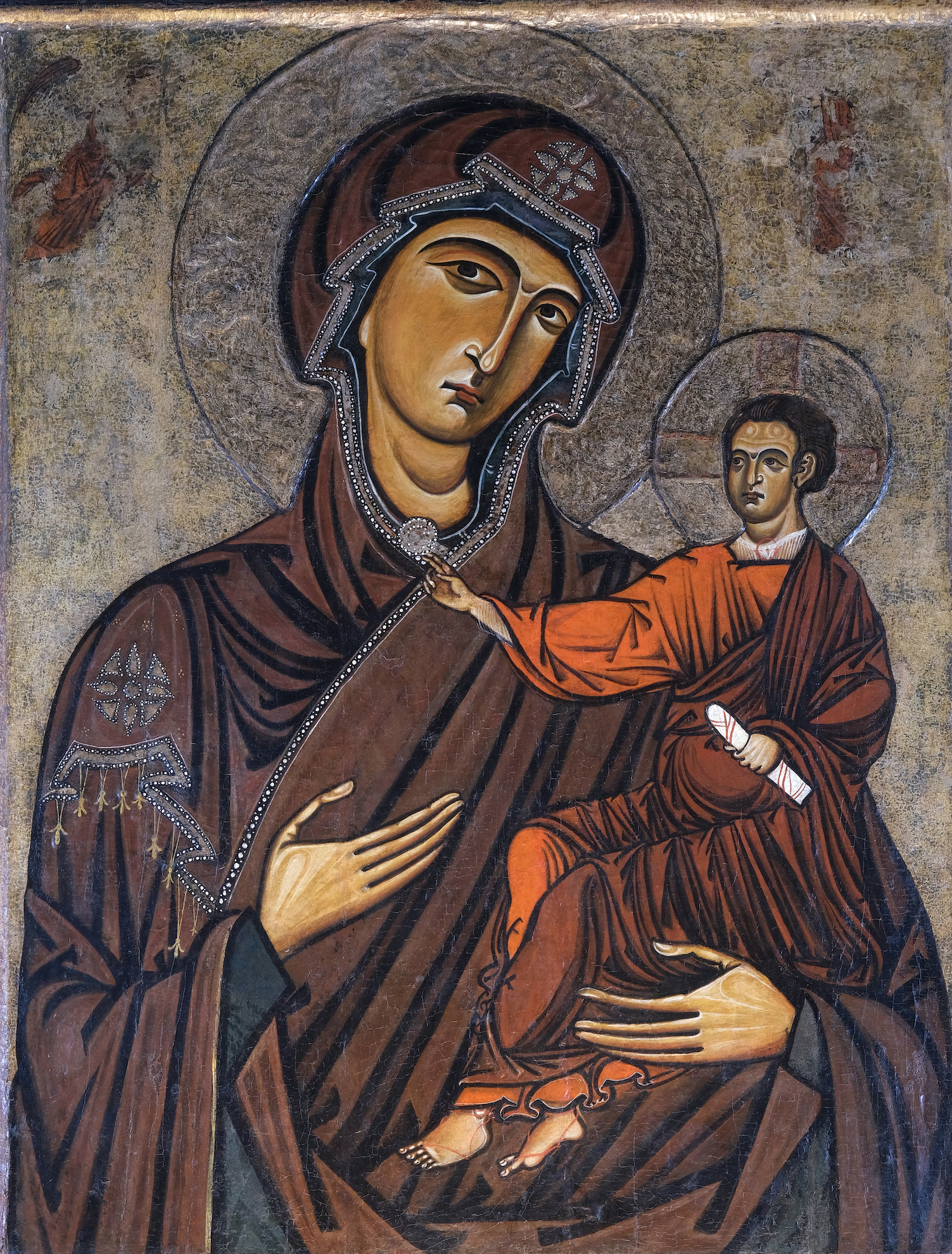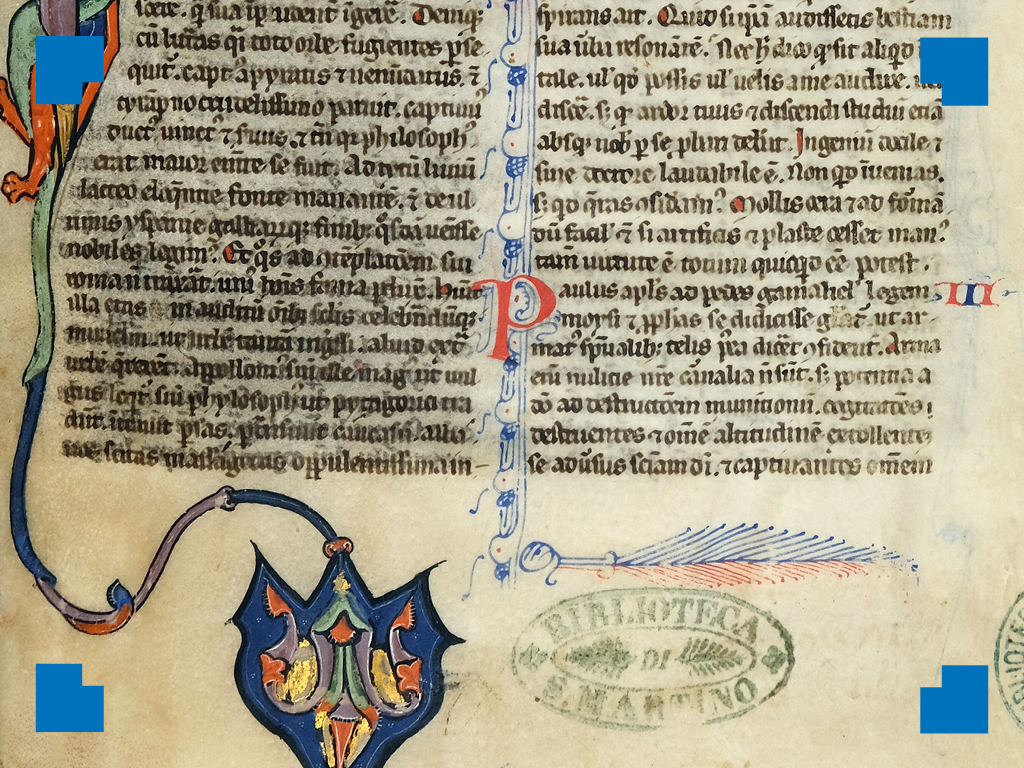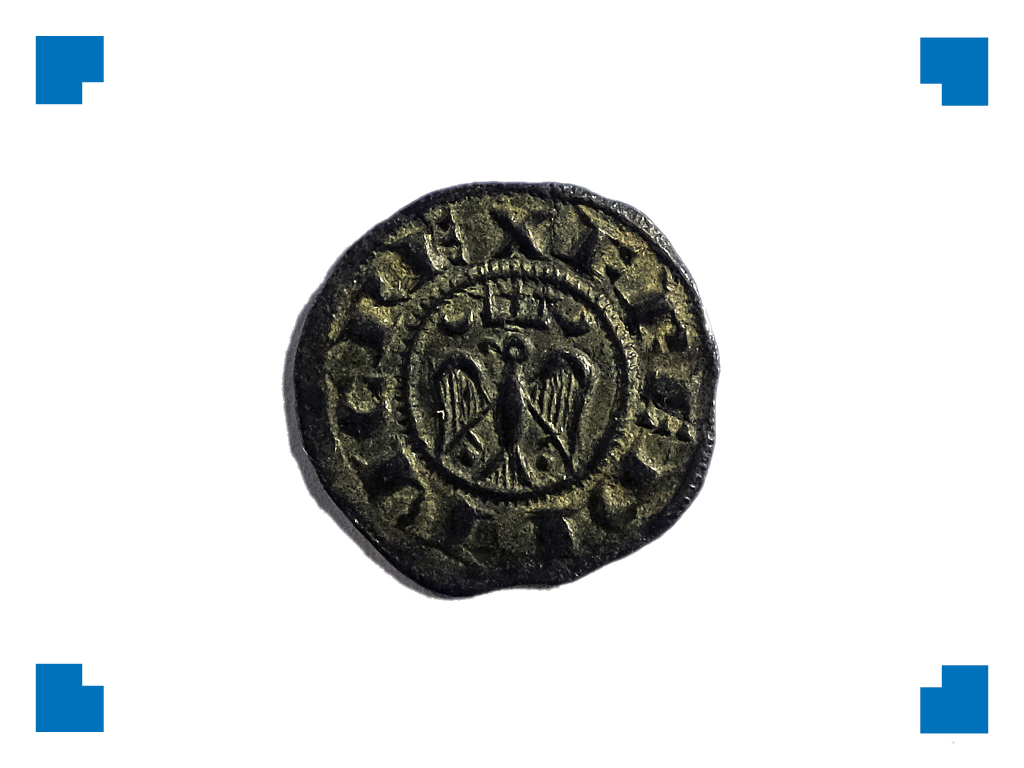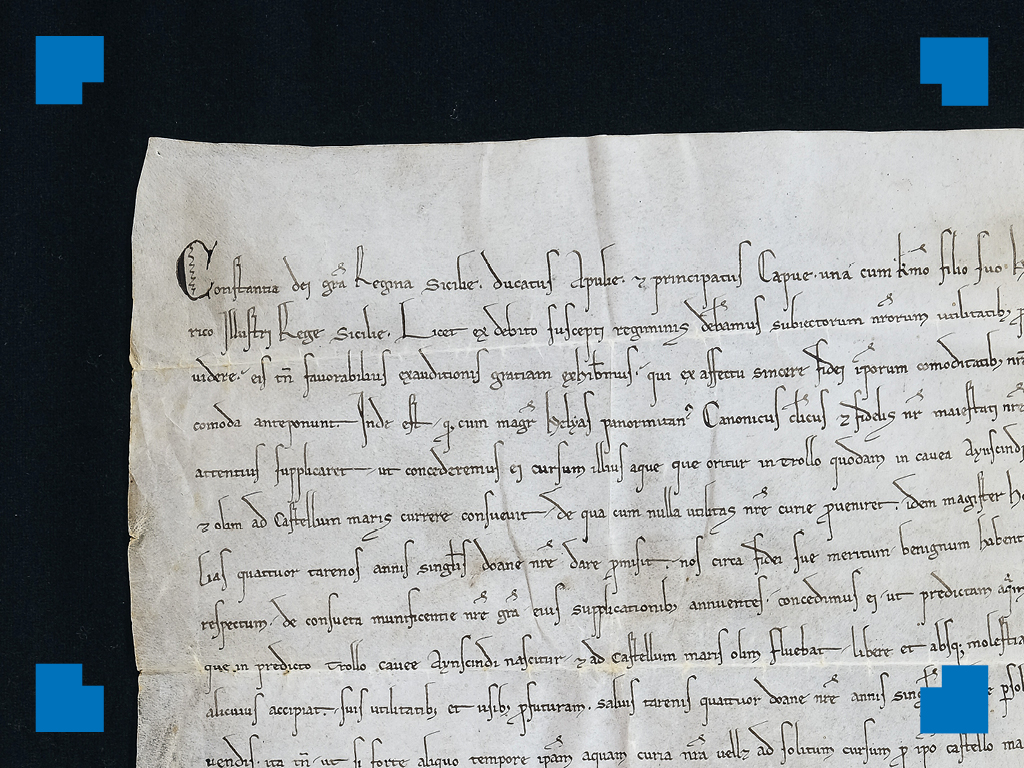
9. Madonna Hodighítria called ‘of William II’
Unknown painter from the Southern Italy, mid-13th c.
Madonna Hodighítria called ‘of William II’
tempera on wood, silver background with relief parts (172×133 cm)
Monreale, Cathedral
This big painting, called “Madonna della Bruna” or “della Negra”, traditionally linked with King William II, founder of the Benedictine abbey and therefore of the archdiocese of Monreale, is often compared with the “Madonna of the Pearl” of Palermo, also exhibited here (cat. 8).
Recent restoration works have post-dated it to the middle of the thirteenth century, in the age of Frederick or at least during the Swabian rule. It is probably an icon painted in the “Greek way”, which circulated among Cyprus, Holy Land and southern Italy (especially in Apulia) and was wanted and venerated for centuries by the monastic community of Monreale, perhaps also in homage to the religiosity of the Norman kings.
In this iconography, one of the most widespread in the Eastern world, Mary turns her gaze towards the faithful and points with her right hand to her Son, whom she supports with her left arm. The symbolic colors of her clothing – a blue tunic and purple mantle trimmed with beads – refer to her humanity clothed in divinity, just as the stars embroidered on her shoulders and forehead testify to her miraculous virginity preserved before, during, and after childbirth.
The child wears, over a transparent white smock, a red tunic and a purple toga that symbolize martyrdom and royalty. While blessing with his right hand, he clutches with his left a closed scroll with the new law of the Gospels.


